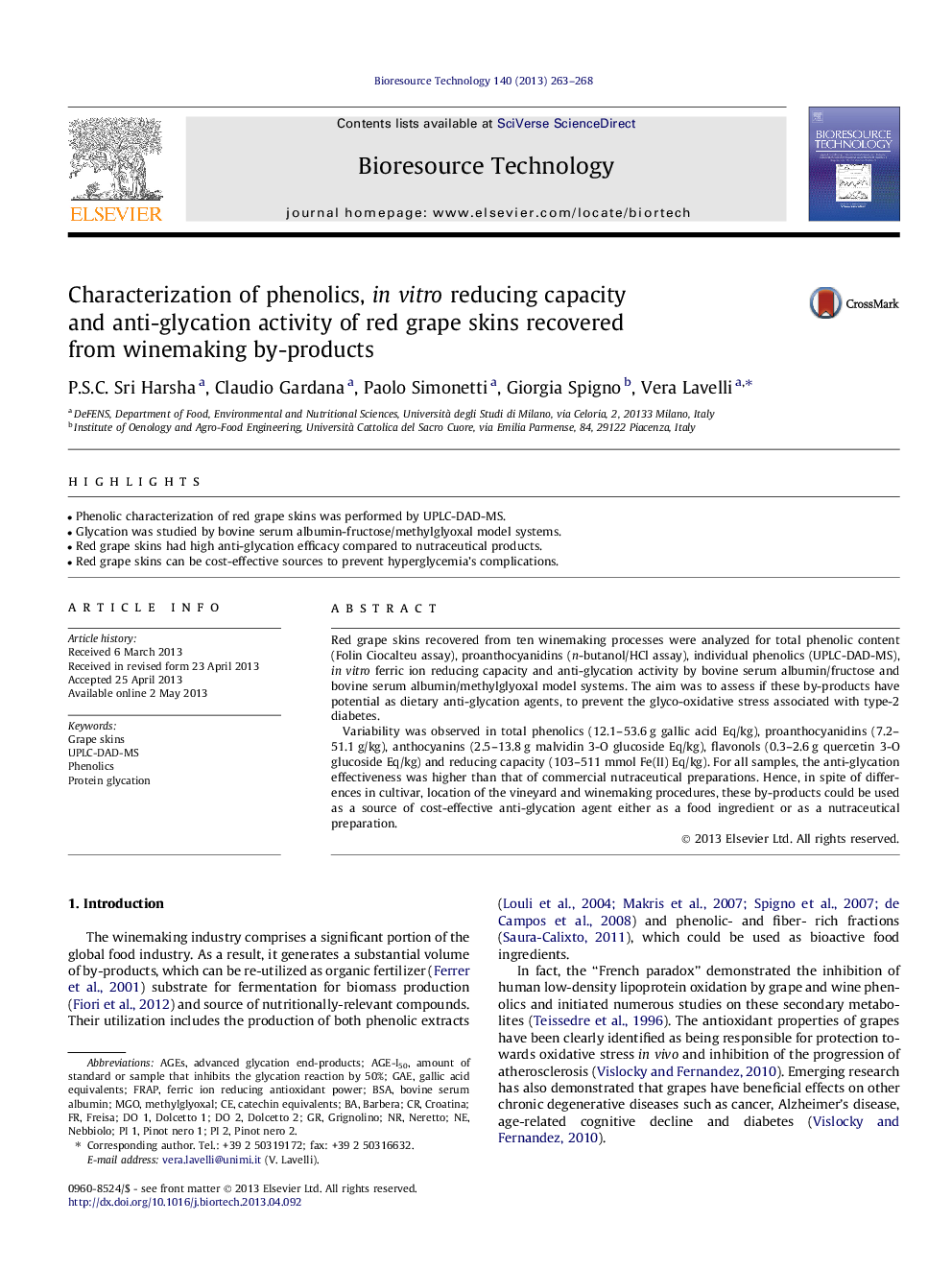| Article ID | Journal | Published Year | Pages | File Type |
|---|---|---|---|---|
| 7082096 | Bioresource Technology | 2013 | 6 Pages |
Abstract
Variability was observed in total phenolics (12.1-53.6Â g gallic acid Eq/kg), proanthocyanidins (7.2-51.1Â g/kg), anthocyanins (2.5-13.8Â g malvidin 3-O glucoside Eq/kg), flavonols (0.3-2.6Â g quercetin 3-O glucoside Eq/kg) and reducing capacity (103-511Â mmol Fe(II) Eq/kg). For all samples, the anti-glycation effectiveness was higher than that of commercial nutraceutical preparations. Hence, in spite of differences in cultivar, location of the vineyard and winemaking procedures, these by-products could be used as a source of cost-effective anti-glycation agent either as a food ingredient or as a nutraceutical preparation.
Keywords
Related Topics
Physical Sciences and Engineering
Chemical Engineering
Process Chemistry and Technology
Authors
P.S.C. Sri Harsha, Claudio Gardana, Paolo Simonetti, Giorgia Spigno, Vera Lavelli,
